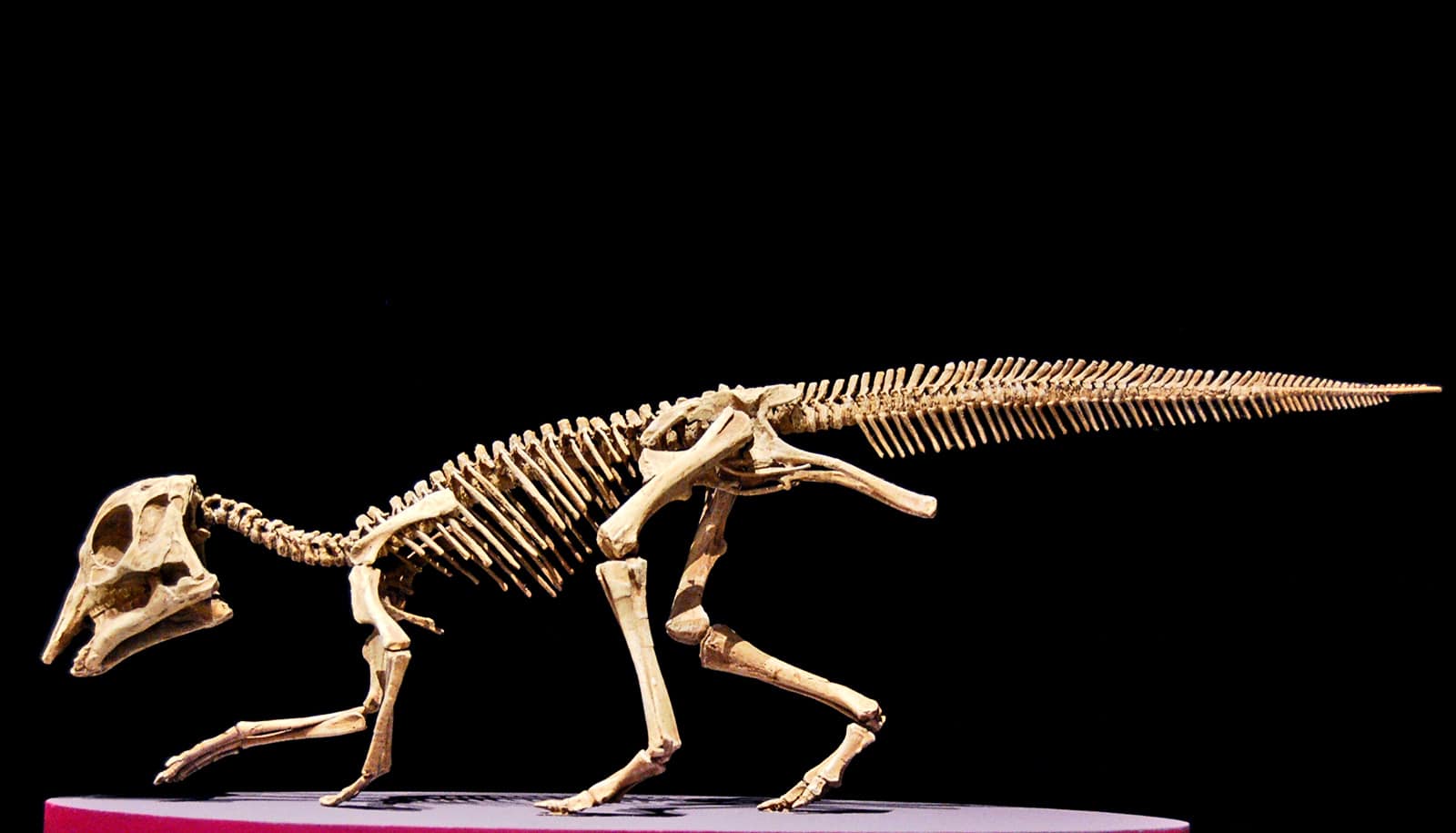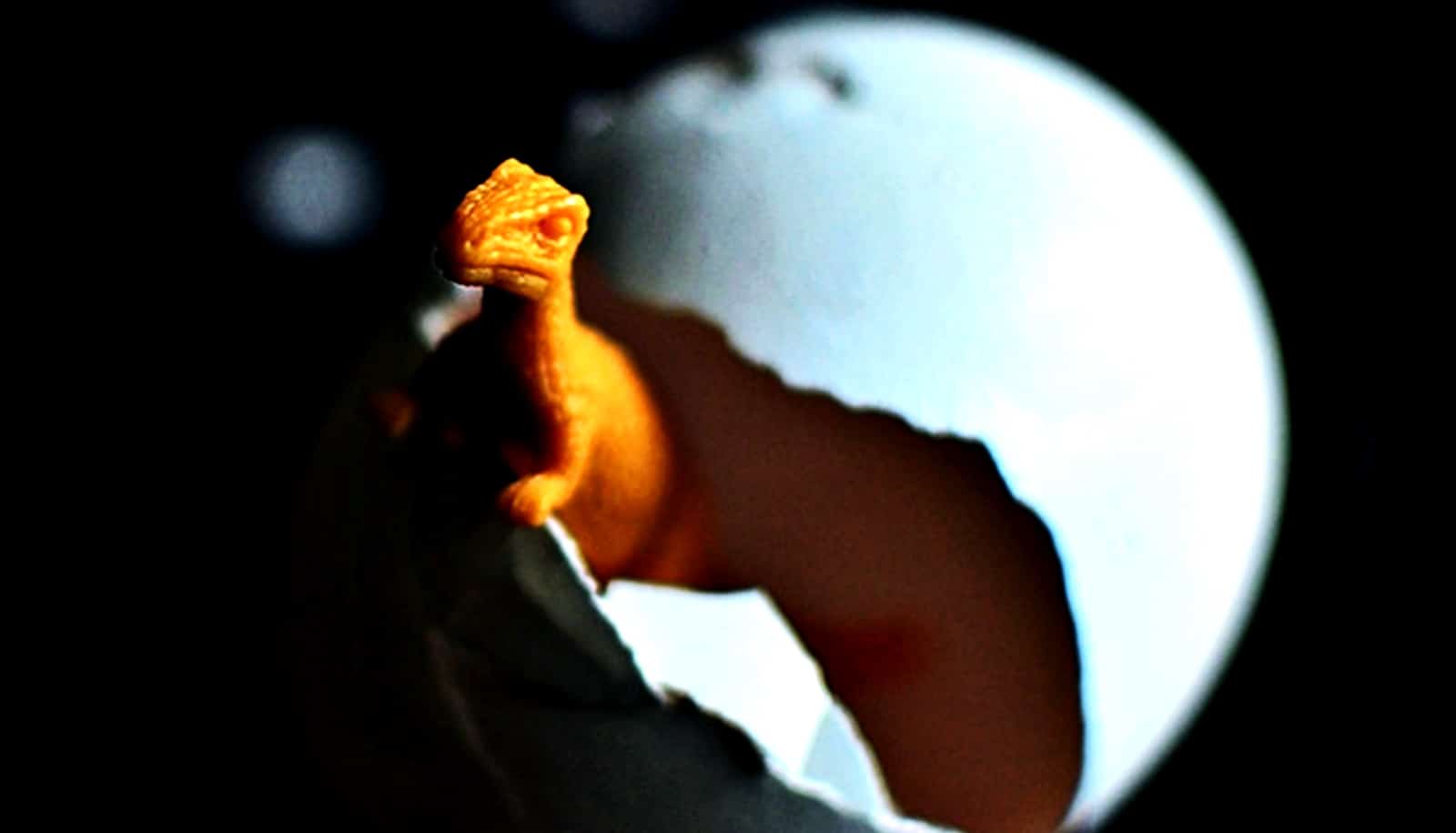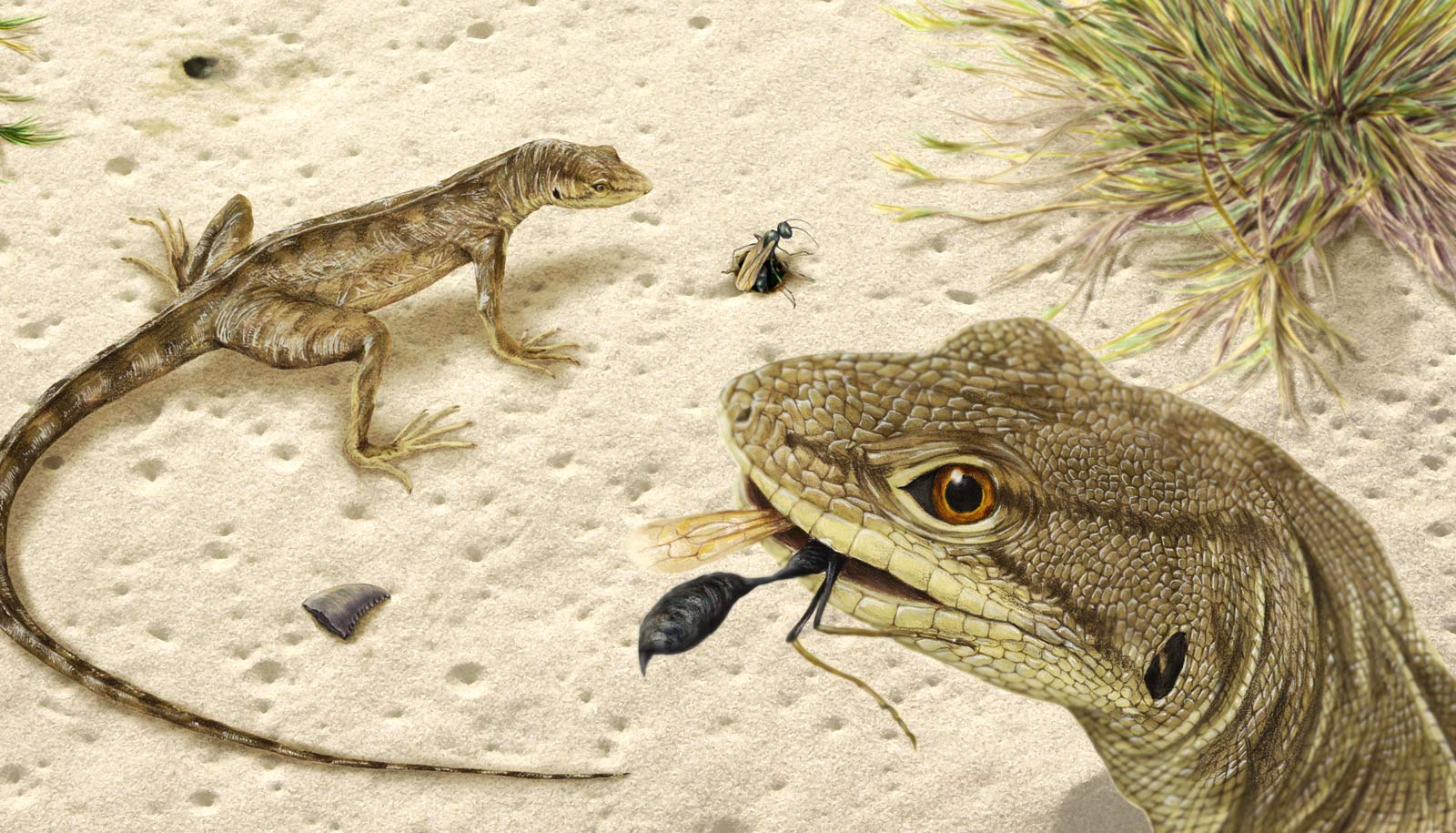Cartilage from a baby duckbilled dinosaur holds evidence of preserved fragments of proteins and apparent chromosomes within isolated cell-like microstructures, report researchers.
The findings further support the idea that these original molecules can persist for tens of millions of years.
Microscopic analyses of skulls from a clutch of eggs, embryos, hatchlings, and nestlings belonging to Hypacrosaurus—a type of duckbilled dinosaur that lived in what is now Montana during the late Cretaceous period—were the work of Alida Bailleul, a paleontologist from the Chinese Academy of Sciences and corresponding author of a paper describing the work in National Science Review.
She noticed structures within certain tissues that were consistent with chondrocytes, or cartilage cells, and within these were internal structures resembling nuclei and chromosomes.
“The skull bones of baby dinosaurs are not fused when they hatch, but instead, some of them have cartilaginous plates that fuse later as bone forms in the spaces between them,” Bailleul says. “Seeing exquisitely preserved microscopic structures that resembled the specific cell types found only in cartilage, and which would have been present in the living organism in these tissues, led us to hypothesize that cellular preservation may have extended to the molecular level.”
Bailleul, at China’s Institute of Vertebrate Paleontology and Paleoanthropology, led a team to determine whether these original molecules had preserved over time. The team included Mary Schweitzer, professor of biology at North Carolina State University with a joint appointment at the North Carolina Museum of Sciences, as well as other researchers from Canada and the United States.
Baby dinosaur and emu skulls
The team performed immunological and histochemical analyses of tissues from the 75-million-year-old hatchling skull, comparing the results to those from an emu skull at a similar stage of development.
“Bird skulls ossify, or harden, in the same pattern as this hadrosaur’s skull would have, and primitive birds (ratites) like emus are the closest relatives we have alive today to non-avian dinosaurs,” Schweitzer says.
The cartilaginous tissues and chondrocytes from the dinosaur skull reacted with antibodies to collagen II, but the surrounding bone did not react with collagen II antibodies. This is significant because collagen II is found only in cartilage, while collagen I dominates in bone. Comparing the results to the emu confirmed the findings.
“These tests show how specific the antibodies are to each type of protein, and support the presence of collagen II in these tissues,” Schweitzer says. “Additionally, bacteria cannot produce collagen, which rules out contamination as the source of the molecules.”
DNA fragments
The researchers also tested the microstructures for the presence of chemical markers consistent with DNA using two complementary histochemical stains that bind to DNA fragments within cells. These chemical markers reacted with isolated cartilaginous cells, supporting the idea that some fragmentary DNA may remain within the cells.
“We used two different kinds of intercalating stains, one of which will only attach to DNA fragments in dead cells, and the other which binds to any DNA,” Schweitzer explains. “The stains show point reactivity, meaning they are binding to specific molecules within the microstructure and not smeared across the entire ‘cell’ as would be expected if they arose from bacterial contamination.”
“Although bone cells have previously been isolated from dinosaur bone, this is the first time that cartilage-producing cells have been isolated from a fossil,” Bailleul says. “It’s an exciting find that adds to the growing body of evidence that these tissues, cells, and nuclear material can persist for millions—even tens of millions—of years.”
Support came from the National Science Foundation, the Packard Foundation, and the Chinese Academy of Sciences.
Source: NC State


